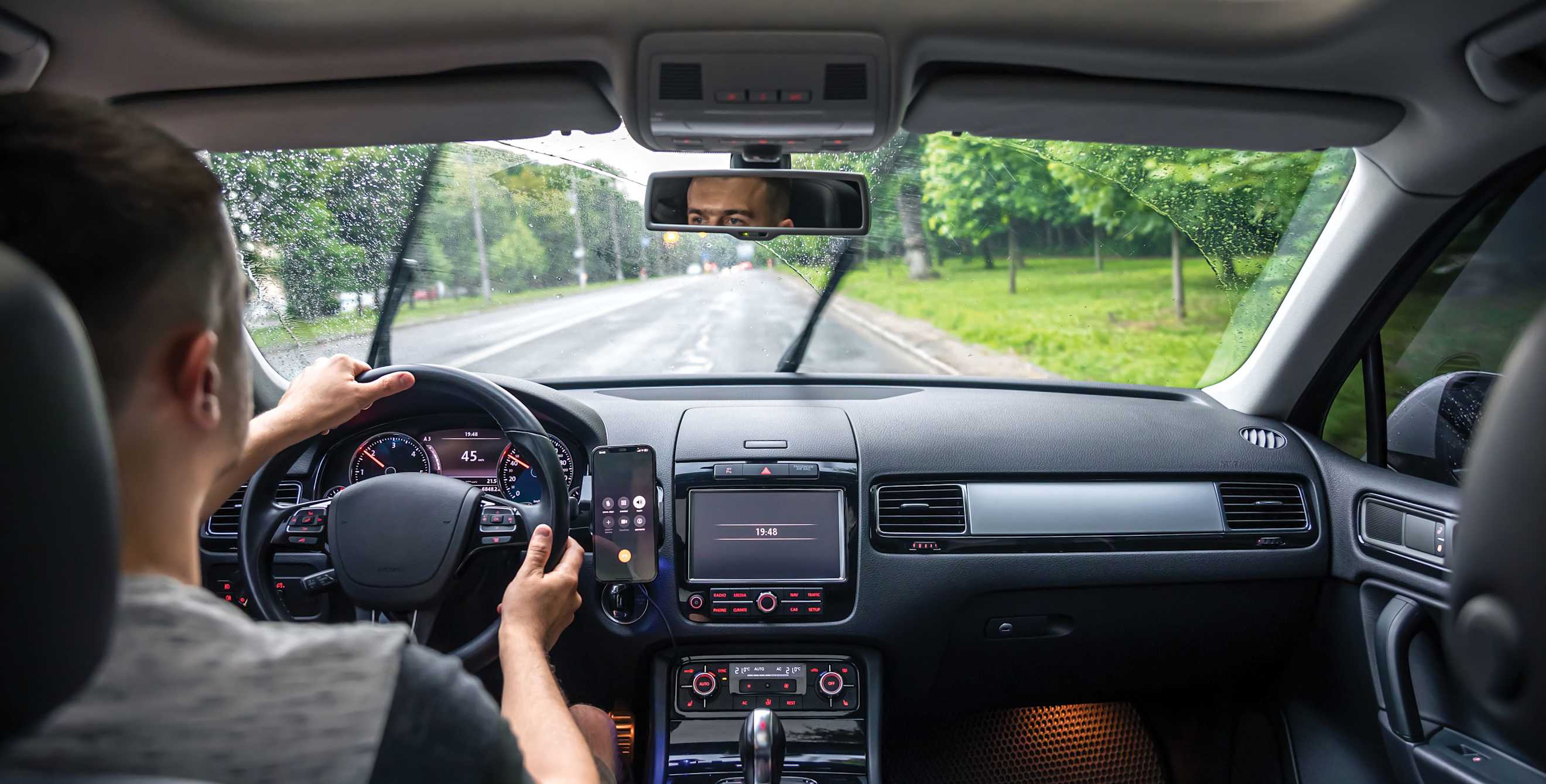
How to Learn—and Practice—Your Car’s Safety Features
Get to know your vehicle’s ADAS.

Modern vehicles are packed with safety features: automatic emergency braking, forward collision warnings, lane-keeping assistance, adaptive cruise control, blind-spot monitoring, and more. Advanced driver assistance systems (ADAS) are designed to make driving safer and easier. But understanding what they do, how they’re useful, and how to use them can certainly feel overwhelming.
Here’s how to make the learning process more manageable.
You could just learn by happenstance—drive around as usual, wait for the systems to activate, then hope you react appropriately—but it’s far better to be proactive.
Practice is key. But, as William Van Tassel, manager of driver training programs at AAA Inc., points out, you first need to learn what ADAS your car has and how they’re supposed to work. For that, Van Tassel says, “the owner’s manual is your best friend.”
Knowing Your ADAS Features
The manual should not only explain which ADAS features your vehicle has, but also what they do, what they don’t do, and how to use them.
The only concern with relying on your owners manual? It may be written to cover every trim of your particular model.
That means your manual might explain features that aren’t actually available on your particular car. There are a couple of ways to find out which ADAS features your car has.
One is to look at the window sticker that was on the car at the dealership; it should list all of your car’s features.
If you don’t have that sticker, another option is to first find your car’s vehicle identification number (VIN). If you can’t find a written record of it, check the dashboard near the windshield or a plate or sticker in the driver’s side door jamb. Then, look up that number on an online decoder such as the one offered by the National Highway Traffic Safety Administration. There, you should be able to find a list of the standard and optional safety systems installed on your vehicle.
How Your ADAS Works
Once you know the ADAS features your car does and doesn’t have, it’s time to learn how they work. Again, the owner’s manual should be your starting point. Read that, but don’t stop there. To further solidify your understanding, Van Tassel suggests looking for videos from the manufacturer or third-party sites such as My Car Does What.
Now that you have a theoretical grasp of your car’s ADAS, you’re ready for some practice. To get hands-on with certain technologies, such as rear-view cameras and rear automatic emergency braking, Van Tassel recommends finding a closed area, such as an empty parking lot, which allows you to experience the system’s interventions without the pressure of live traffic. He suggests bringing along traffic cones, cardboard boxes, or other large but pliant objects to simulate obstacles that your car’s ADAS should detect and, potentially, react to.

For features like lane-maintenance systems, which trigger in specific real-world conditions, Van Tassel suggests testing on quiet roads with clear lane markings; that way you can safely experience warnings and interventions without bothering other drivers. For something such as adaptive cruise control, you can practice with a friend in another vehicle on a back road, to find out when the feature engages and what happens when it does. “I would not be testing these at high speeds on freeways,” he says.
Another resource to check out: Some car dealerships offer technology clinics to recent and prospective customers. Such clinics typically include hands-on trials and explanations of the car’s features. Ask your dealer if that’s a possibility, but don’t be surprised if it isn’t. “Some dealers are better prepared to offer such demonstrations” than others, Van Tassel says.
The overall goal of this process, he says, is to “prevent surprises when using technology on public roads.”
Lifelong Learning
Finally, once you’ve figured out your car’s ADAS, don’t think your journey is over. Today’s drivers need to develop an attitude of continuous learning. Your current vehicle might be able to do X, Y, and Z. But your next one might add a whole alphabet of new features that you’ll have to learn to use.
Also, remember that ADAS isn’t self-driving. While these systems are incredibly helpful, they’re never a replacement for an attentive driver. You should, Van Tassel says, “drive as if these technologies are not present,” treating them as backups and a way to improve your safety margins, rather than excuses to indulge in riskier driving. When a safety system engages, you can take that as feedback about your driving and attention level.
So, yes, you should practice—but with purpose and preparation. By combining foundational learning with smart, controlled trials, you can turn that initial nervousness into confident mastery.
Let us help you find your next new or used car.